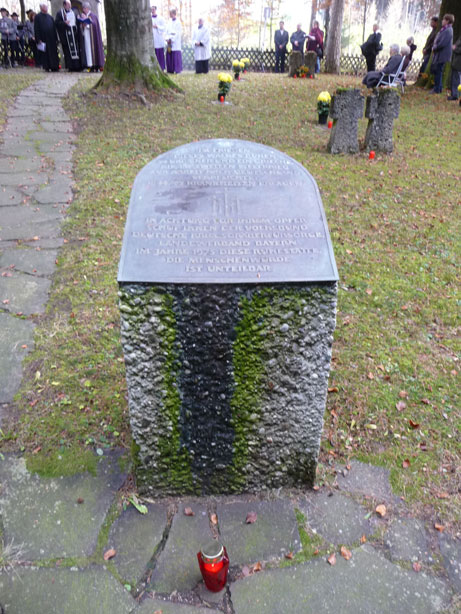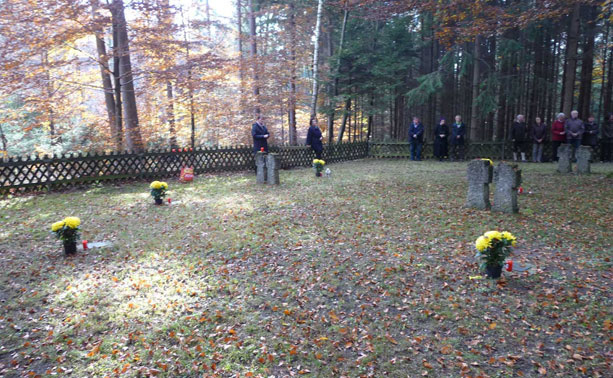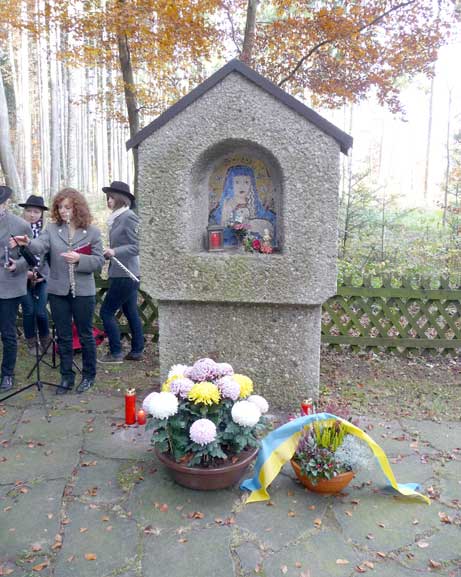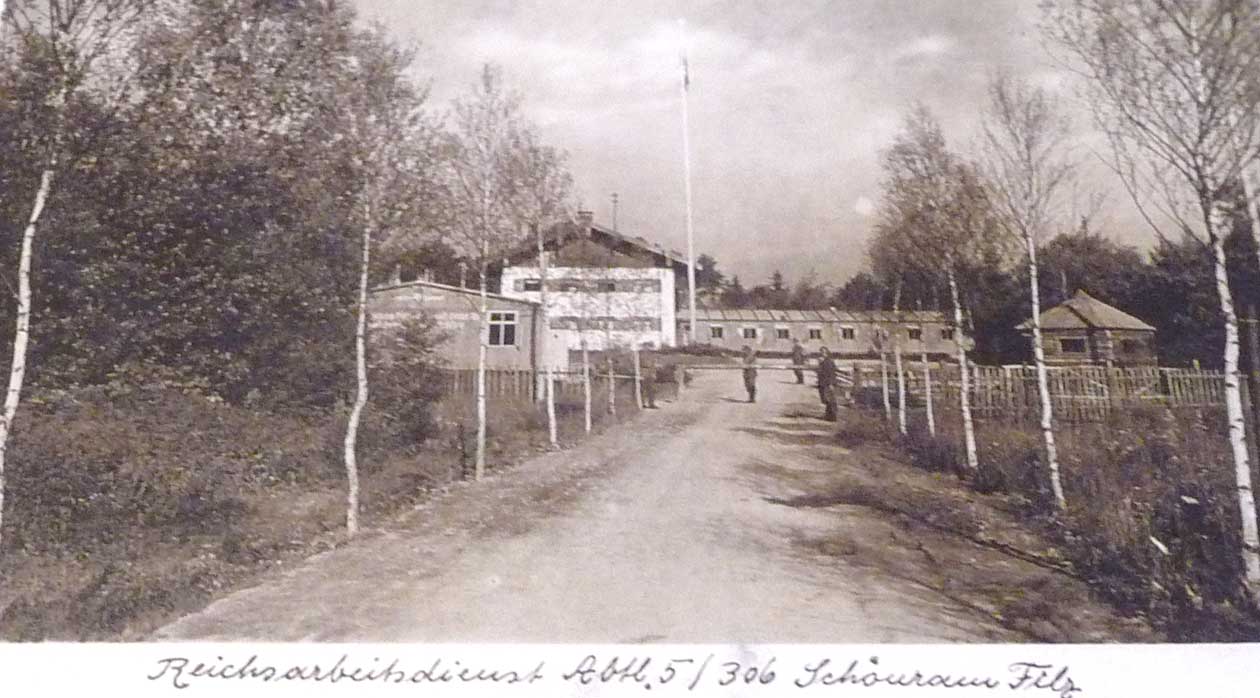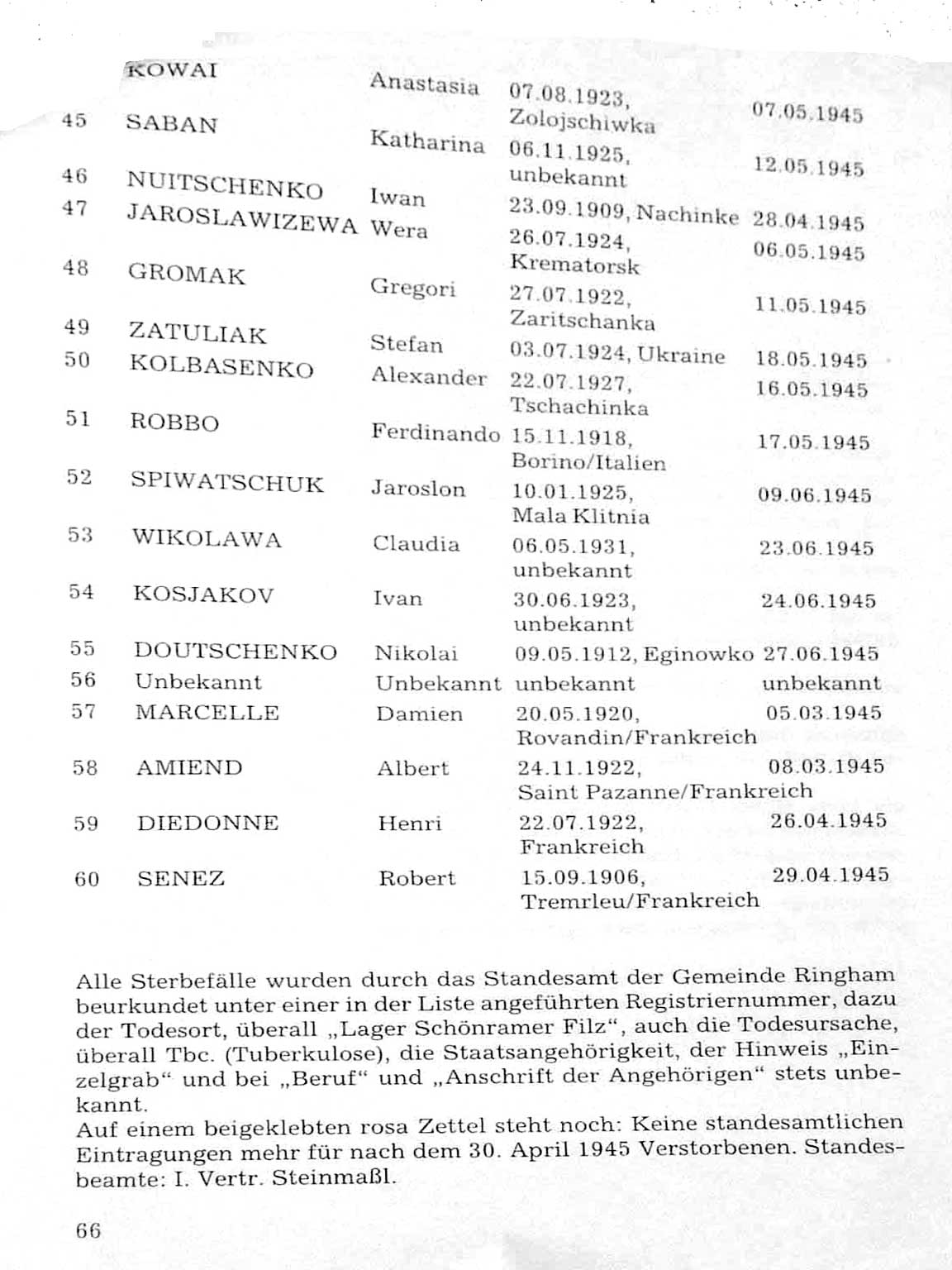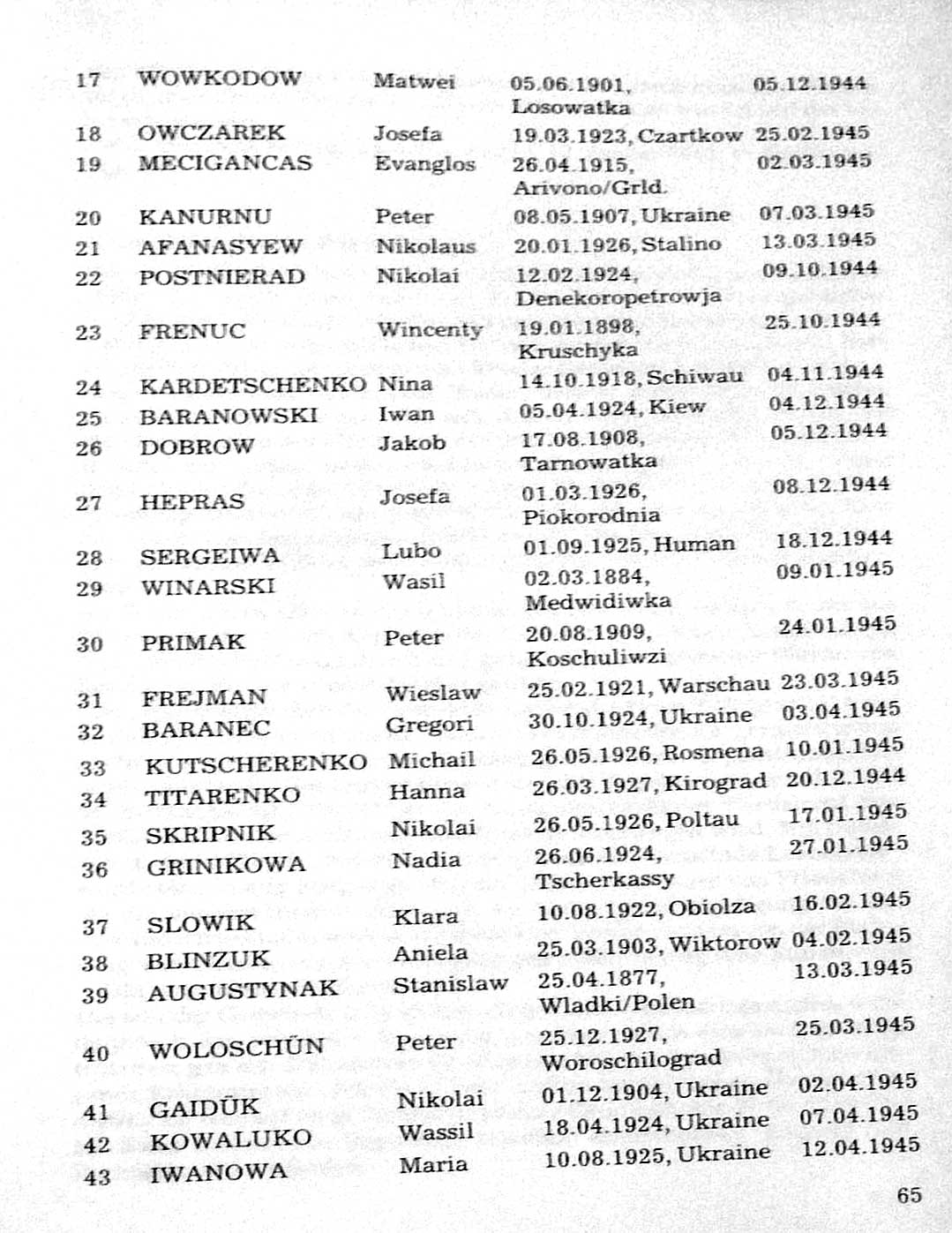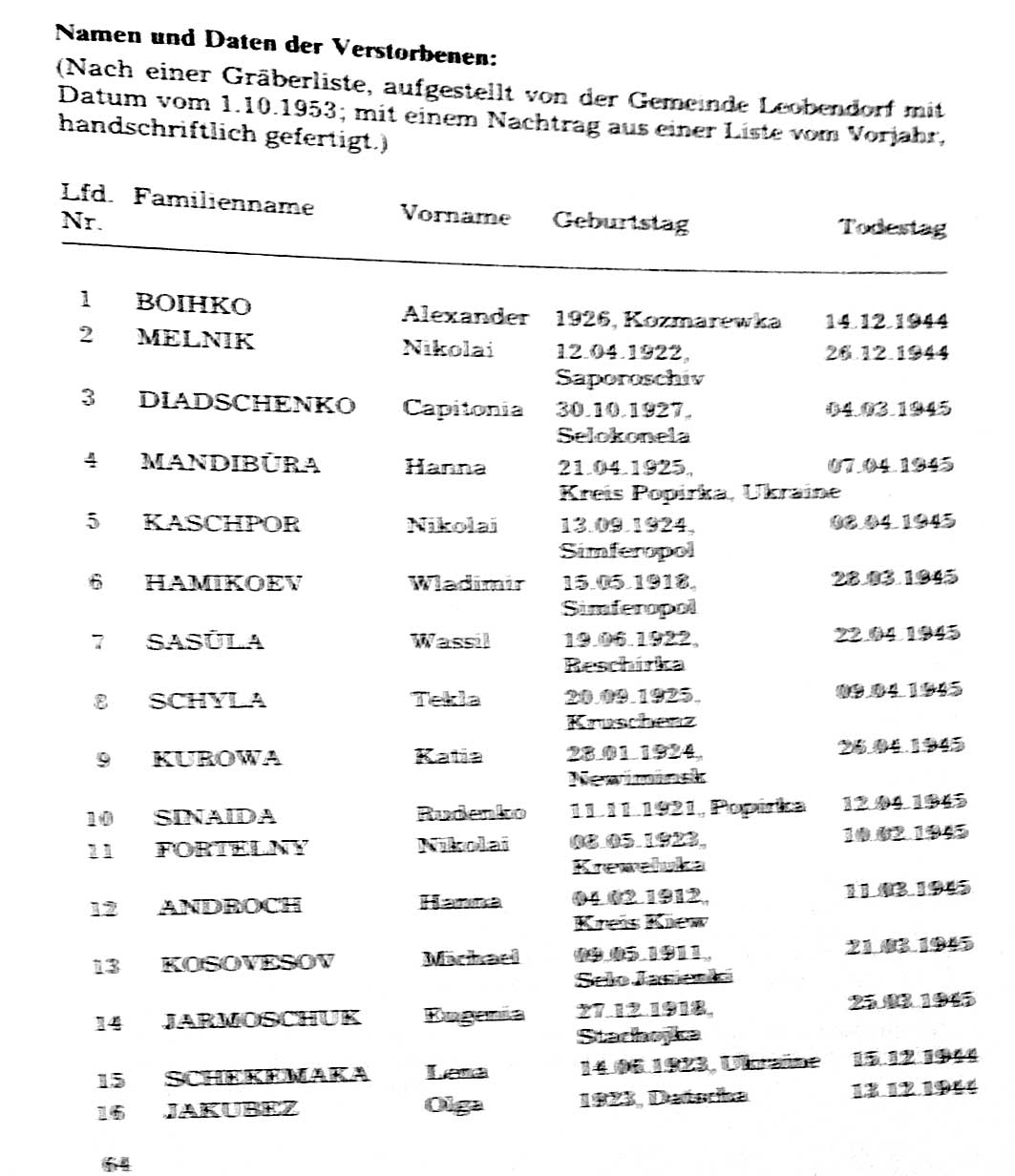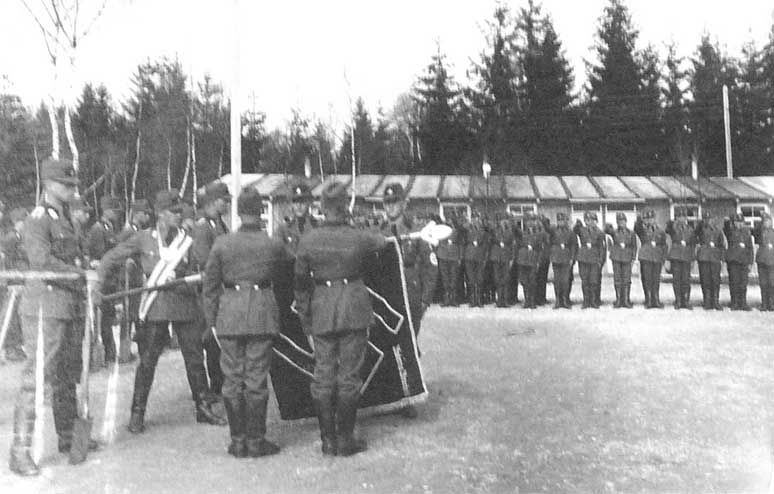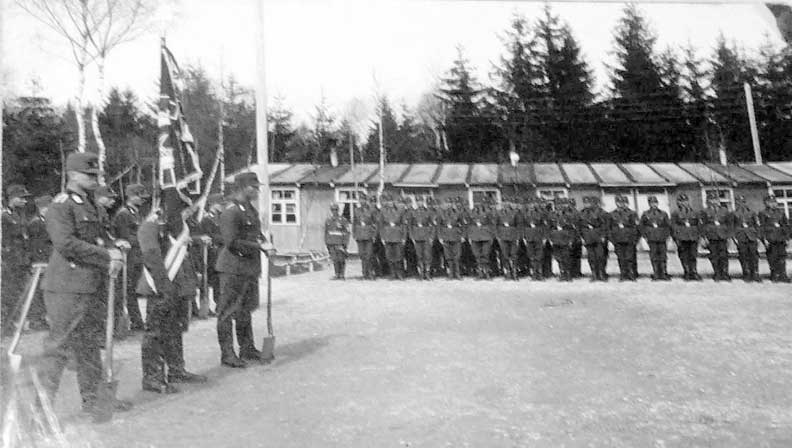Translated & submitted by Anthony Schlega schlega.a@web.de
On the road to Laufen, after passing through the village of Leobendorf, almost invisible, a small path leads up into the woods. A modest conglomerate of stone crosses mark the way to a rising path which leads to old beech trees that are surrounded by a wooden fence, which marks the area of the final resting place for fifty four Ukrainians, and one Greek.
A few steps into the cemeteries entrance and a stone memorial with a mounted plaque which reads:
One cannot deny the feeling of solitude when wonders through the cemetery in late autumn reading the names of the buried pondering, trying to decipher their fate of the people lying here in foreign soil far away from their homeland.
Opposite, at the other side of the cemetery, another stone memorial with a carved arch pictures a mosaic of Maria, Mother of God, with the Lamb of God. Spread over the ground are the name plates of the deceased, some with conglomerate stone cross headstones, the symbol of the German War Graves Commission.Foreign Workers during the war; coerced workers of the Nazi occupiers of their homeland. Thousands from Ukraine and other countries, most of them forced to leave, freighted to warring Germany in cattle wagons.
In Germany, they worked mainly in the arms manufacturers, or on farms, under demanding conditions that went beyond what their strength allowed. Little or bad nourishment brought sickness for many of these foreign workers or an early death.
The former German Labour Service camp in the nearby village of Schoenram, were now used to home these sick, mostly Ukrainian, but also French, Greek, and Italian workers allocated to the ‘MUNA’, an underground ammunition depot in Traunreut, for the production of poison gas.
Many of them died of tuberculoses in the camp. Later some were isolated in the lung clinic in the nearby town of Laufen.
Originally there were 60 deceased buried in the cemetery: 39 males, 20 females, and 1 unknown. Later in 1950, the four French were exhumed and returned to France and in 1958 the one Italian was exhumed and reburied in Munich.
The average age of the buried was 26, the youngest 14, and the eldest 68.
The B&W photo's of the camps above is the Camp of the former German Labour Service camp in the nearby village of Schoenram, which were used to home the sick.
